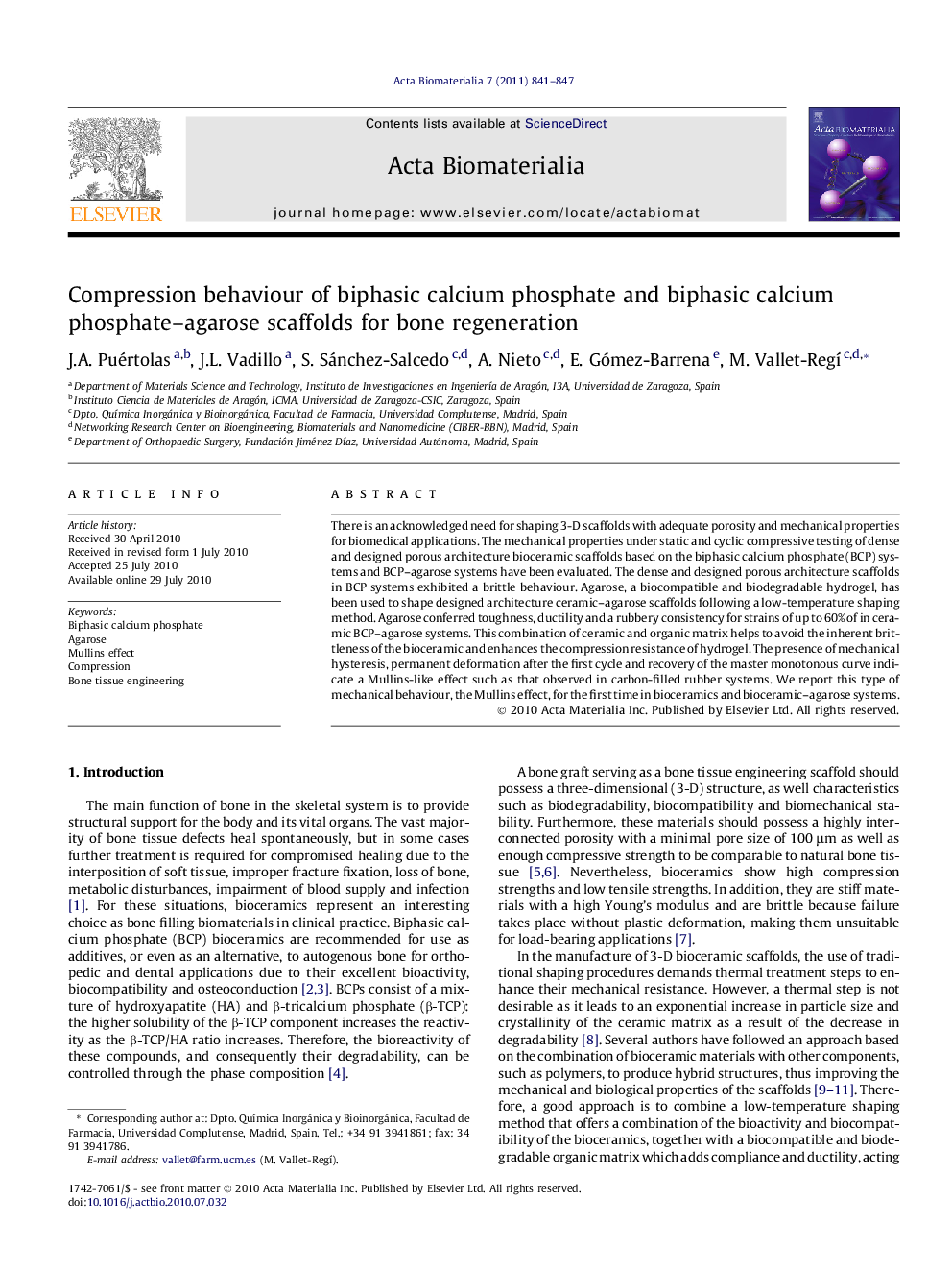| Article ID | Journal | Published Year | Pages | File Type |
|---|---|---|---|---|
| 993 | Acta Biomaterialia | 2011 | 7 Pages |
There is an acknowledged need for shaping 3-D scaffolds with adequate porosity and mechanical properties for biomedical applications. The mechanical properties under static and cyclic compressive testing of dense and designed porous architecture bioceramic scaffolds based on the biphasic calcium phosphate (BCP) systems and BCP–agarose systems have been evaluated. The dense and designed porous architecture scaffolds in BCP systems exhibited a brittle behaviour. Agarose, a biocompatible and biodegradable hydrogel, has been used to shape designed architecture ceramic–agarose scaffolds following a low-temperature shaping method. Agarose conferred toughness, ductility and a rubbery consistency for strains of up to 60% of in ceramic BCP–agarose systems. This combination of ceramic and organic matrix helps to avoid the inherent brittleness of the bioceramic and enhances the compression resistance of hydrogel. The presence of mechanical hysteresis, permanent deformation after the first cycle and recovery of the master monotonous curve indicate a Mullins-like effect such as that observed in carbon-filled rubber systems. We report this type of mechanical behaviour, the Mullins effect, for the first time in bioceramics and bioceramic–agarose systems.
